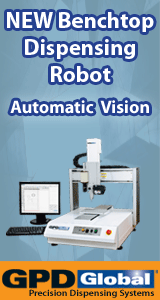Printed Circuit Board Assembly & PCB Design Forum
SMT electronics assembly manufacturing forum.
- SMTnet
- »
- Electronics Forum
- »
- I wonder
I wonder
![]()
![]() I wonder to knock this site with this question?
Are ther...
- Sep 08, 1999
by
I wonder to knock this site with this question?
Are ther...
- Sep 08, 1999
by
![]()
![]() | I wonder to knock this site with this question?
| Are ...
- Sep 09, 1999
by
davef
| I wonder to knock this site with this question?
| Are ...
- Sep 09, 1999
by
davef
![]()
![]()
![]() | | I wonder to knock this site with this question?
| | ...
- Sep 09, 1999
by
| | I wonder to knock this site with this question?
| | ...
- Sep 09, 1999
by
![]()
![]() | I wonder to knock this site with this question?
| Are ...
- Sep 09, 1999
by
Scott S. Snider
| I wonder to knock this site with this question?
| Are ...
- Sep 09, 1999
by
Scott S. Snider
![]()
![]()
![]() | | I wonder to knock this site with this question?
| | ...
- Sep 09, 1999
by
| | I wonder to knock this site with this question?
| | ...
- Sep 09, 1999
by
![]()
![]() | | | I wonder to knock this site with this question?
| ...
- Sep 09, 1999
by
davef
| | | I wonder to knock this site with this question?
| ...
- Sep 09, 1999
by
davef
![]()
![]()
![]() | scott.
| I appreciate your sincere answer.
| woul...
- Sep 10, 1999
by
Scott S. Snider
| scott.
| I appreciate your sincere answer.
| woul...
- Sep 10, 1999
by
Scott S. Snider
![]()
![]()
![]() thank you very much Mr. Scott.S Snider
Your experience g...
- Sep 13, 1999
by
thank you very much Mr. Scott.S Snider
Your experience g...
- Sep 13, 1999
by
![]()
![]() Six Sigma has been invaluable here at my contract manufactur...
- Feb 12, 2002
by
Six Sigma has been invaluable here at my contract manufactur...
- Feb 12, 2002
by
![]()
- SMTnet
- »
- Electronics Forum
- »
- I wonder







